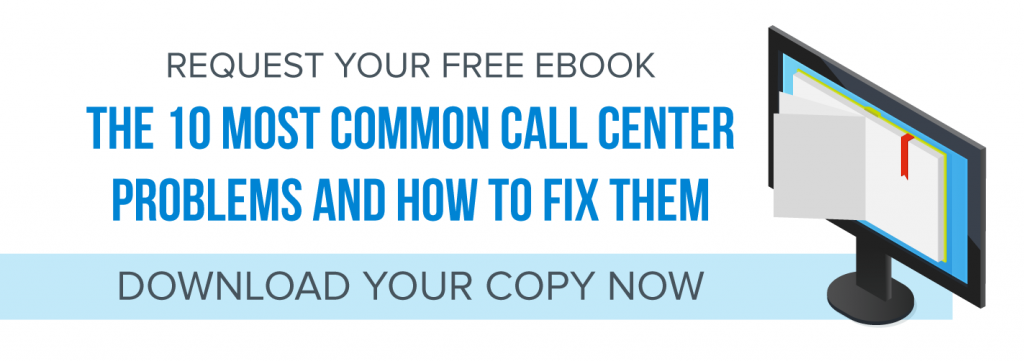One of the most compelling questions for any call center is how to improve first call resolution (FCR). That one statistic says so much about the effectiveness of your call center and how satisfied your customers are. On the call center side, the less repeat calls you have to manage, the better. For customers, finding a satisfactory resolution to a problem after one phone call helps nurture loyalty and trust.
Unfortunately, according to US customer surveys, 20 to 30 percent of your call center’s call volumes are call backs from customers with unresolved concerns. Those are calls that clog up your phone lines, tie up your agents, and force your other customers to wait even longer in call queues listening to hold music.
How do you resolve more concerns on the first call? Read on for our top four FCR fixes.
#1. Use cloud technology.
Even the best-trained agents can be hampered by the technology they use.
Besides the loss of productivity, it’s downright embarrassing for an agent—and infuriating for a customer—when the customer has to endure multiple transfers to different departments. It’s even worse when the customer’s call is dropped because the call center relies on an aging or faulty phone system. Your agents need effective tools to make them autonomous and successful. The right technology can both speed up customer service times and solve many of the problems that keep your FCR low.
Cloud technology has had a significant effect on call centers, making much of the phone system hardware involved in running a call center obsolete. Cloud call center technology have replaced expensive on-site servers and switch circuits. Along with the savings in hardware, maintenance, upgrades, and replacement, cloud systems are also easier to update and master. They enable managers to:
- Add new agents and call queues online with a few clicks of a mouse.
- Monitor and mentor new employees on the phone.
- Funnel customers and respond to their concerns with greater efficiency using automatic call distribution (ACD) and interactive voice response (IVR).
- Gather in-depth, actionable information.

#2. Build a Common Knowledge Base
Customers call you demanding answers, and your agents want to help, but before they can make anything happen, they need information. They need to know how to access customer account data, where basic call histories are stored, and answers to common customer questions.
All call centers should provide agents with a knowledge base where they can access this information. A way to get started is to identify common reasons why customers call, the questions they typically ask, and what the most helpful response has been. Creating a “guidebook” of standard issues and solutions will contribute to freeing up agents and phone lines more efficiently. It’s also recommended that any knowledge base should be accessible electronically in a searchable format so agents don’t have to sort through a lot of unnecessary information. A digital format is also easier for supervisors to manage and update.
#3. Make customer information readily available to agents.
You don’t want to pester the customer for information that’s already in your system, but may be difficult to locate or access. Customers grow agitated (or more agitated) when they have to repeat their situation or have to hand over information they’ve already surrendered. In fact, 84 percent of customers said they are frustrated when the agent doesn’t have the information in-hand. Requesting that personal data again can add pressure to an already tense situation. But agents often need that information before they can usher the customer toward a solution.
The right kind of call center phone system will integrate with your customer relationship management (CRM) software so that a caller’s contact notes and account information pops up on an agent’s screen when the customer calls. With this information in front of them, your agents are better prepared to resolve a customer’s concern without resorting to a callback or transfer.
4. Gather and evaluate analytics.
A call center is only as good as the metrics it collects. First call resolution is only one such metric. However, simply tracking FCR over a one-year period helped 60 percent of companies improve their performance by up to 30 percent. The hitch is, every call center is unique, so they’re going to require different sets of data to tackle their unique goals. That’s why, when selecting the technology that will support your call center, it’s important to invest in a system that enables the easy gathering of the metrics you need to fine-tune your efforts.
Knowing How to Improve First Call Resolution Is Only the Beginning
Modern call centers face increasing challenges on several fronts, including technology, personnel, and metrics. Figuring out how to improve first call resolution in your call center may just be the beginning of your concerns. We discuss the top problems faced by call centers and possible solutions in the ebook below.
